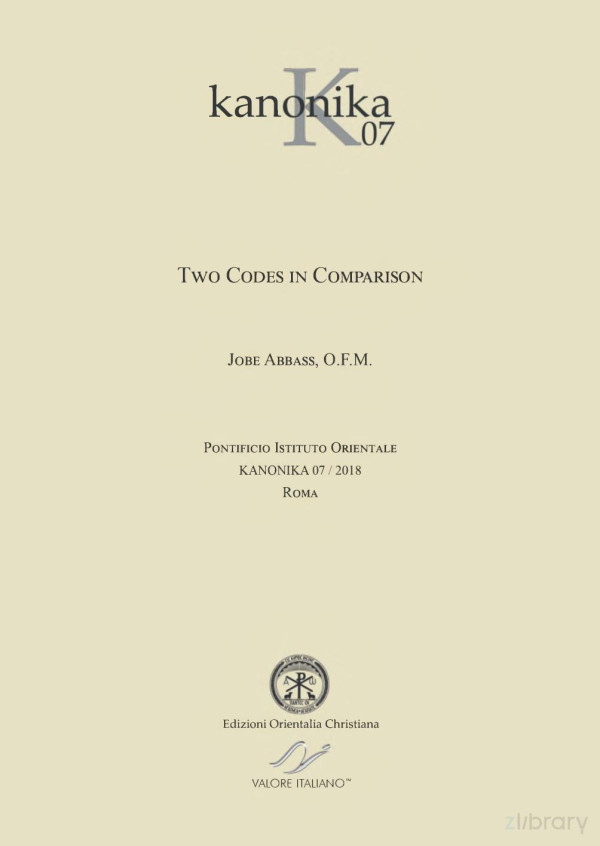

Most ebook files are in PDF format, so you can easily read them using various software such as Foxit Reader or directly on the Google Chrome browser.
Some ebook files are released by publishers in other formats such as .awz, .mobi, .epub, .fb2, etc. You may need to install specific software to read these formats on mobile/PC, such as Calibre.
Please read the tutorial at this link: https://ebookbell.com/faq
We offer FREE conversion to the popular formats you request; however, this may take some time. Therefore, right after payment, please email us, and we will try to provide the service as quickly as possible.
For some exceptional file formats or broken links (if any), please refrain from opening any disputes. Instead, email us first, and we will try to assist within a maximum of 6 hours.
EbookBell Team

4.0
66 reviewsII for comparative studies ofthe Eastern and Latin Codes. His Holiness urged such studies in
order to promote a knowledge of the “one Corpus Juris Canonicf ofthe universal Church.
This work contains nine such studies regarding the corresponding Eastern and Latin norms
that govern the consecrated life, marriage, general norms, temporal goods, and procedure.
In the light of the Holy See’s Explanatory Note regarding CCEO canon 1 (December 8,
2011) and Pope Francis’ motu proprio De Concordia inter Codices (September 15, 2016),
comparative studies of the codes have assumed even greater importance. For this reason,
three pertinent articles (chapter 10-12) have been added to the third edition ofthis book.
The comparative studies’ findings clearly indicate that, while parallel Eastern and Latin
canons are sometimes similar, the two Codes are simply not the same. A knowledge of the
Codes as different, however, is not the only reason why comparative studies are useful. The
author shows that knowing these differences is often necessary and a matter of practical
importance. This will be true, for example, in cases of interritual marriage, in providing for
the pastoral care of Eastern Catholics entrusted to the care of a Latin bishop, or even in
applying different procedural rules when Latin canonists serve on an Eastern tribunal.
It is also evident from the studies’ findings that the Eastern and Latin Codes are not
so distinctly separate as to be unrelated. The author explains that there are Eastern canons
which expressly (explicitly/ implicitly) also affect the Latin Church. Comparative studies,
then, serve to define more clearly the interrelation between the two Codes.
On the basis of his comparative studies, the author is convinced that canonists are only
beginning to reap the benefits that were evidently intended by the pope’s call for such studies
ofthe Eastern and Latin Codes...
…